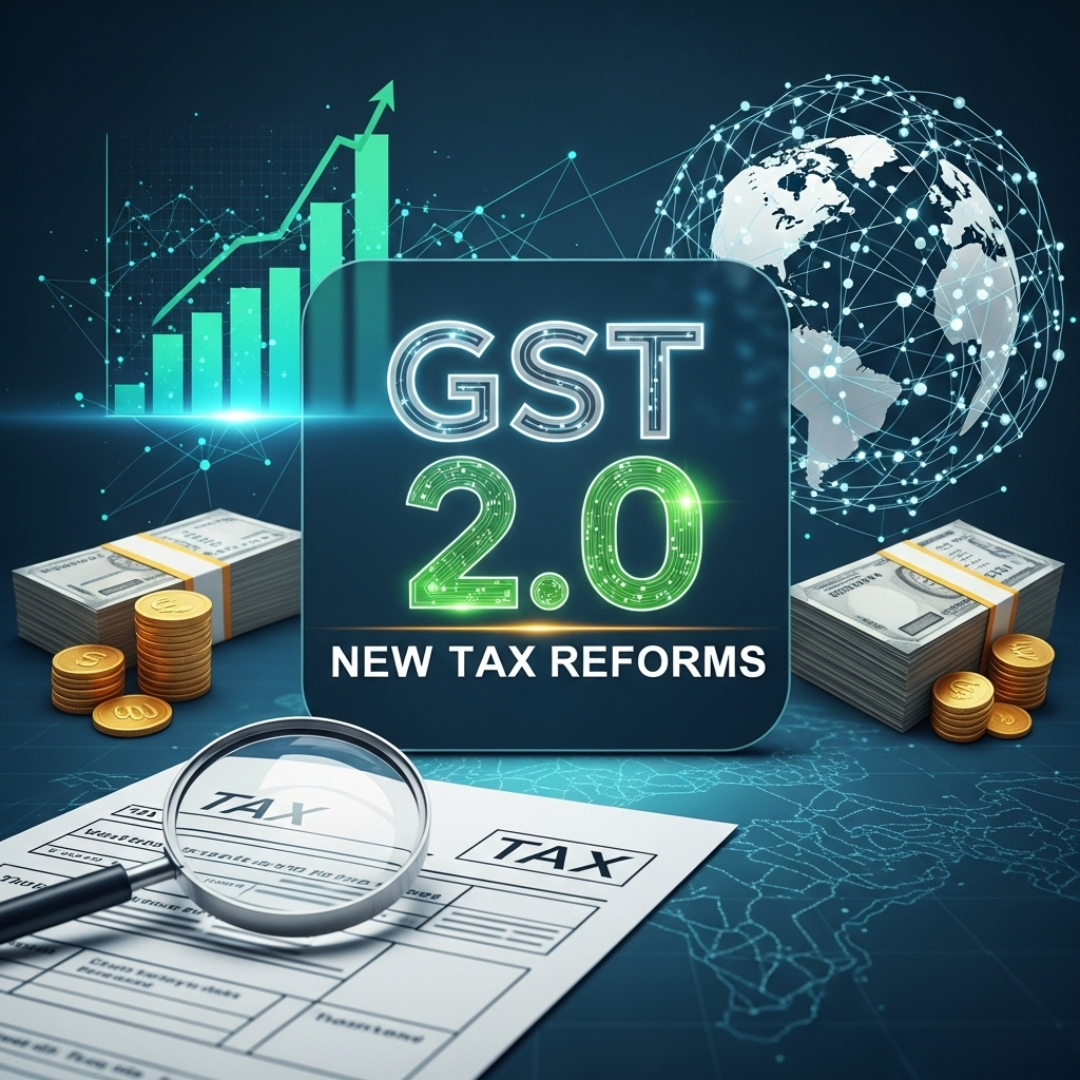GST 2.0: Major Tax Reforms Every Business Must Know in 2025
The year 2025 marks a significant milestone in India’s taxation landscape with the introduction of GST 2.0, a modernized version of the Goods and Services Tax system. Designed to simplify compliance, improve transparency, and boost ease of doing business, GST 2.0 aims to bridge long-standing gaps in the earlier framework. Whether you’re a small trader, startup, or large enterprise, understanding these updates is crucial to ensure smooth operations and tax accuracy.
1. Simplified Return Filing System
One of the biggest highlights of GST 2.0 is the revamped return filing process. The government has launched a single monthly return (which auto-populates the major information of e-invoices and e-way bills). This reduces errors in manual entries and makes the process of reconciling the buyers and sellers faster. Businesses will not be required to submit several forms such as GSTR-1, GSTR-3B and GSTR-9 in distinct forms- making the process of filling tax forms quicker and more effective.
2. Real-Time Input Tax Credit (ITC) Validation
Earlier, mismatches between invoices often delayed ITC claims. With the GST 2.0, ITC validation will be in real-time. Once an invoice has been posted by the supplier, the buyer has the ability to see the invoice and verify it immediately. This system will help to minimize the occurrence of fake invoicing and flow of legitimate credit to actual taxpayers. In case of businesses, this implies better cash flow and less blockage of working capitals.
3. AI-Powered Fraud Detection
GST 2.0 uses AI and data analytics to identify suspicious transactions in order to improve compliance. Through automated warning mechanisms and anomaly detection systems, irregularities in tax filing, input credit, or turnover declarations are flagged. This reform not only secures the honest taxpayers but also eliminates fraudulent acts within a short time. Companies that have implemented GST-compliant billing software, such as can find compliance checks using AI without a lot of effort.
4. Unified E-Invoicing for All Businesses
Earlier, e-invoicing was mandatory only for large enterprises. GST 2.0 makes e-invoicing universal, even to small and medium-sized businesses (SMEs). This action introduces standardisation, openness and lighter audit trails in all industries. E-invoices are automatically reported to the GST portal, and this saves time and eliminates mistakes that happen during manual reporting.
5. Faster GST Refunds and Reduced Processing Time
Under the new system, refunds will be processed within seven days, compared to the earlier lengthy wait times. The banking APIs and the GST portal integrate to enable quicker account verification and automatic refund disbursement. This streamlined process will have the greatest benefits for exporters and businesses that conduct high-volume transactions.
6. Enhanced Support for SMEs and Startups
Recognising the growing importance of small businesses, GST 2.0 introduces a Simplified Composition Scheme with a higher turnover limit and lower compliance requirements. New businesses and SMEs will now have an easy time onboarding, less paperwork, and enhanced access to digital tax tools.
Conclusion:
GST 2.0 is more than just a reform - it's a transformation. By combining technology, transparency and taxpayer convenience, it paves the way for a strong digital economy. Companies that adapt quickly will not only remain competitive but will also have a competitive advantage in efficiency and reliability. To stay ahead, consider integrating Optech GST billing software, which ensures seamless adaptation to all the new GST 2.0 features -simplify filing, automate invoicing and keep your business ready.





